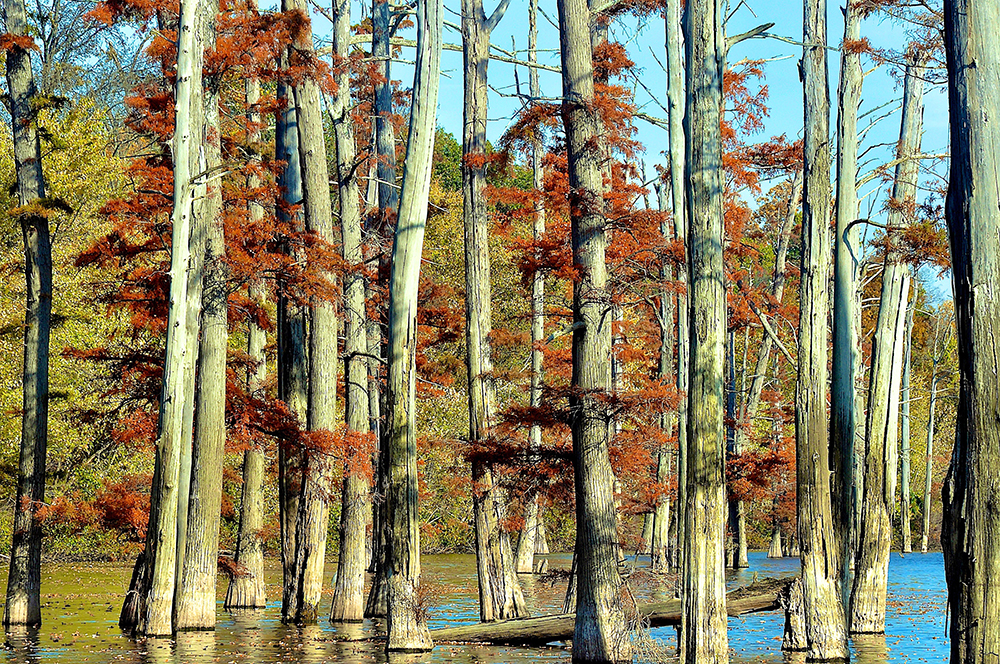
Title: Indiana’s Wabash River Valley
Author: Marsha Williamson Mohr
Publisher: M.T. Publishing, Evansville, Indiana
Publication Date: Feb/March 2017
Size: 9×12 inches; 184 full color pages;
Pre-order price: $34.95 (plus shipping/handling and tax if Indiana resident)
Regular price: $39.95 (plus shipping/handling and tax)
To order: call 1-888-263-4702; or visit www.mtpublishing.com.
The Wabash River is Indiana’s river. It’s the official state river, and the state song also sings its praises … “On the Banks of the Wabash, Far Away.”
But the Wabash River is not so far away for anyone living in Indiana. It enters the state at Jay County, not far from where it begins inside Ohio. Its next almost 500 miles are spent flowing northwest, then west, then mostly south, through 18 counties and 11 county seats, till it meets the Ohio River and forms Indiana’s distinctive southwest border. Two-thirds of the state’s landmass is within its watershed.
In her latest book, Tipmont REMC member and photographer Marsha Williamson Mohr traces the Wabash River and its tributaries in almost 500 photographs. “Indiana’s Wabash River Valley,” a coffee-table style book is being published by Evansville-based M.T. Publishing Company. The book is expected to be released in February or March.
“For this book, I want to mainly stress the beautiful natural areas with my photos,” writes Mohr in the book’s forward. “… (A)s a ‘rural photographer’, … I love photographing barns, mills and covered bridges.”
Indiana celebrated its 200th birthday in December. This book captures the natural beauty and rustic rural life along our State River, reminding us of the heritage that still remains for the eye of the photographer, painter or poet in all of us.
Marsha Williamson Mohr was featured in an Electric Consumer cover story in February 2011 when she published the book “Indiana Barns.”
Click here to revisit that article.
She’s also published a number of other books of rural Indiana photography, including one on Indiana’s covered bridges.
All photos in this package by Marsha Williamson Mohr


The Bridgeton Mill and covered bridge in Parke County harken back to the 1800s in Indiana. Located along Big Raccoon Creek, the pair add to the beauty and history of the Wabash River Valley. Though the bridge was destroyed by arson in 2005, a historically accurate replacement was completed a year later. The Wabash River and its tributaries are the focus of new book highlighted this month by Tipmont REMC consumer Marsha Williamson Mohr.

A spring waterfall creates swirling eddies along Ross Run, a tributary
of the Wabash River, at the Hathaway Preserve at Ross Run Nature Preserve
just east of the city of Wabash in Wabash County. The 72-acre preserve
is owned by ACRES Land Trust.

The George Rogers Clark Memorial and National Historic Park on the banks of the Wabash in Vincennes pays tribute to Clark who led a daring surprise attack in February 1779 on the British Fort Sackville which is believed to have been on the site near the river. South of Terre Haute, the Wabash makes up the state’s southwest border with Illinois. The national memorial was dedicated by President Franklin Roosevelt in 1936.

An Amish couple crosses the Sim Smith Covered Bridge over Leatherwood Creek, east of Montezuma in Parke County. The bridge, built in 1883, is said to be haunted.

The Seven Pillars lie about four miles southeast of Peru in Miami County along the Mississinewa River, a tributary of the Wabash River which flows to the north. The formation of rounded buttresses and alcoves was created over centuries as wind and water eroded the stoney bluff on the north bank. The Frances Slocum Trail passes along the top of the formation. The Miami Indians took advantage of the formation for council meetings and gatherings. It remains a sacred place for members of the Miami tribe who remain in Indiana.

The Mary Frances Smith Memorial Chapel, built circa 1881, overlooks the Wabash from Ross Camp south of West Lafayette. The chapel can be rented through the Tippecanoe County Parks & Recreation Department for weddings and church services. It features stained glass windows, a pressed tin ceiling and an organ.

The bluff along the Wabash River at Merom in Sullivan County offers a grand view of the river and Illinois farmland on the other side, especially during the fall.

Bald Cypress trees rise from the swamp-like waters of the Hovey Lake State Fish & Wildlife Area where the Wabash ends at the Ohio River. The trees, found mostly in the “big river” southern parts of the United States, represent some of Indiana’s broad biological diversity.



